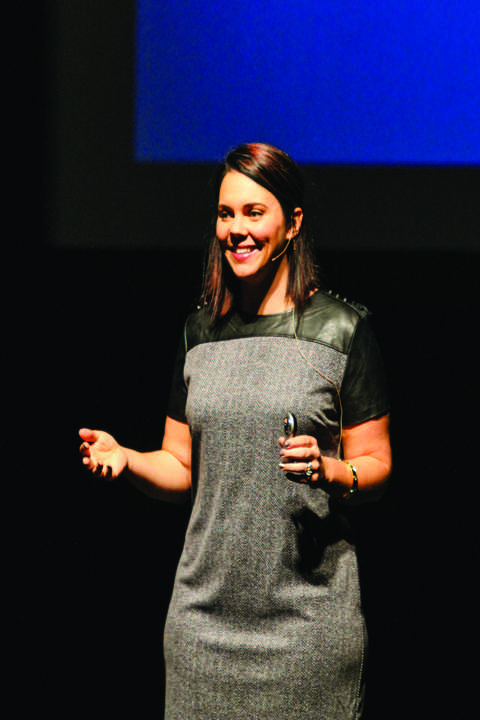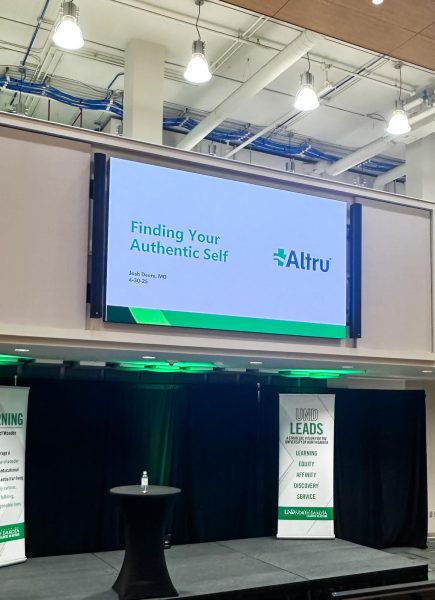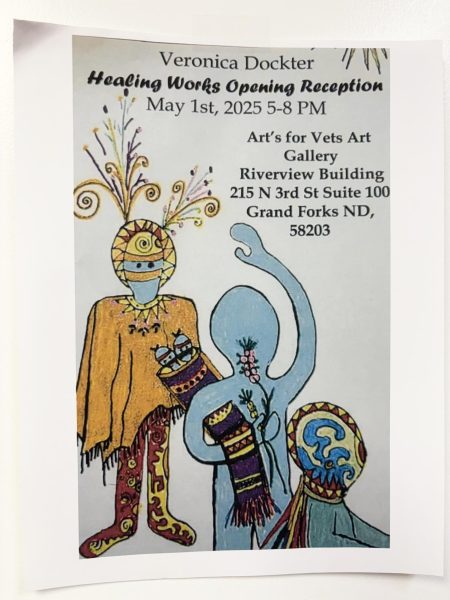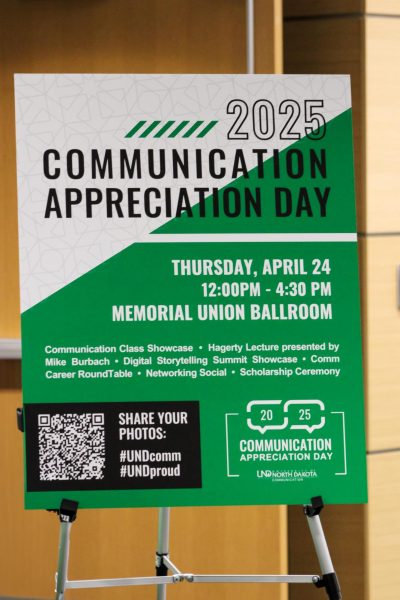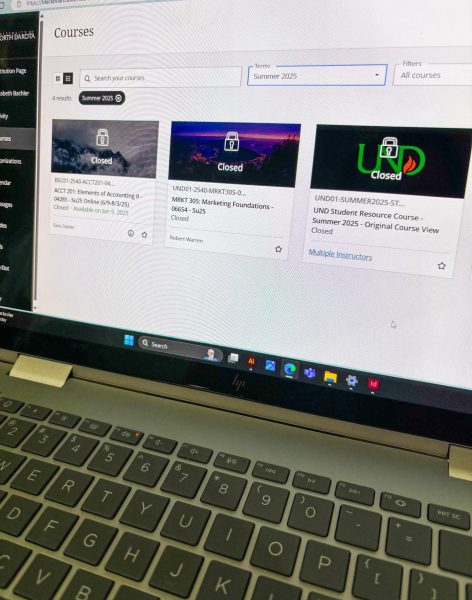Dove spokeswoman empowers UND students
Dove Girl Stacy Nadeau speaks at the Chester Fritz Auditorium Friday. Photo by Jennfer Friese/The Dakota Student.
Award-winning public speaker and “Dove Girl” Stacy Nadeau embraced the true definition of beauty Wednesday night at the Chester Fritz Auditorium.
This stop has been one of many for Nadeau since her journey of empowering millions of women and men across the nation began 10 years ago.
Her story started when she was a sophomore at DePaul University in Chicago. It was then she was approached by a talent agent “looking for real women, real beauty and real curves.”
Nadeau said she was bewildered because she wasn’t “model” material and declined, but her roommate, Katie, had different ideas.
Katie took the agent’s business card and scheduled an appointment for a meeting with her on Nadeau’s behalf.
Angred by this, Nadeau called her mother to vent about the whole situation.
“My mother told me to take every situation that comes my way and that I have nothing to lose,” Nadeau said.
Nadeau’s roommate forgot to mention she had to show up in her underwear.
Only four photographs were taken — front, back and each side.
“After the photoshoot, I told Katie that I never wanted to speak of it again,” Nadeau said.
Six months and seven callbacks later, she received a call telling her that she was one of the Dove Girls.
“Two weeks later, I was flown out to meet the five other women for the photo shoot,” Nadeau said. “3,000 pictures had been taken, while only eight were used for the campaign.”
The producers for the photo shoot told Nadeau and the other models they had never shown women unairbrushed and untouched. They put the photos across fifteen different markets in the U.S.
“The ad was printed in every women’s magazine and 90 percent of the men’s magazines,” Nadeau said.
While the media reacted over the next six months, Nadeau had a few questions about the Dove campaign — Why were they doing this? What was their message behind this?
Dove had posted a poll for women across the U.S. and asked a simple question: “Do you feel comfortable calling yourself beautiful?” Only 2 percent of the women surveyed responded “yes” when the campaign started in 2004.
Last month, 10 years later, after the campaign had influenced many women, Dove redid the survey. This time 4 percent had responded “yes.”
According to Nadeau, after the campaign started, Dove did a tickbox campaign, with pictures posted on Times Square of a picture of a woman with two choices.
For example, an elderly female had the choice of wrinkled or wonderful. This created a lot of buzz in the media and the population wanted more.
“After six months had gone by, the Today Show wanted an interview with the Dove Girls,” Nadeau said. “After the nerve wracking, seven-and-a-half minute interview, the floodgates opened.
This was no longer an advertising campaign, it was now a conversation between girlfriends, mothers and daughters, husbands and wives and boyfriends and girlfriends.”
Nadeau explained that every talk show across the U.S. wanted an interview with the Dove Girls’. However, all of them wanted them to speak in an interview in their underpants.
“We respectfully declined all of them, except Oprah,” Nadeau said. “You do not say no to Oprah.”
They knew she was going to put the most positive vibe on its campaign and they aired the Dove Girls interview with Oprah in 111 different countries.
In June 2005, Dove launched their first billboard.
From this, it had an ad in the newspaper to meet the Dove Girls in person and thousands of people over 10 city blocks had lined up to meet them.
“All of the people were so overjoyed that (Dove) did this,” Nadeau said. “Someone finally stepped up and took a stand. The campaign was no longer about featuring women on a poster for Dove, it was about changing lives, possibly even saving them.”
Colin Johnson is a staff writer for The Dakota Student. He can be reached at colin.m.johnson@my.und.edu.


